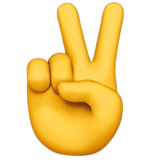Solovyova Marina Viktorovna
I will be glad to hear from you


Where is the line between "a child with ASD does not understand or does not want to do?"
Post is a solid life hack for parents and professionals.
Put ❤️ on, if it's useful.
Children with ASD have difficulties with imitation, concentration, understanding instructions, communication and motivation for action. Perhaps these are the main whales that complicate adaptive training.
I think every specialist has faced such a problem.
· How do you know if the child does not understand your task or does not want to do it?
Imagine. You have shown and explained the exercise, but the child does not do it. What to do?
I propose a scheme of work in 3 stages:
1. The reason for the refusal may be in the behavior.
What should I do if non-fulfillment is a refusal?
Work with motivation and understanding of the structure of training.
If you see the refusal as a protest, say / show the child again what exercise you will do with him ( ‼️ ), how long it will last (repetitions, seconds, etc.), when there will be rest and what encouragement the child will receive at the end. Keep your promises, never cheat.
2️. If you have agreed with the child and started doing the task and the refusal started again, then analyze your method of explaining the exercise. Perhaps there is something wrong with him and the child does not understand you.
How to explain and show:
⁃ slow
split the exercise into as many parts as the child will understand
⁃ give the simplest instructions (individually for each child)
⁃ do not shout, speak confidently and clearly
⁃ use a physical prompt when you are sure that the child cannot do the task himself, even after a visual prompt
⁃ praise for successful completion
Don't be afraid to make several explanations for one exercise. There will definitely be a key. The simpler, the better.
3️. If the exercise is performed, but the undesirable behavior appears again:
1. Make sure that you have explained the exercise clearly. Test yourself according to the scheme above.
2. If everything is OK with the display and explanation, adapt the load, the complexity of the task, the weight of the inventory. But don't cancel the task completely!
3. Do fewer repetitions in the task, rest more often, but more approaches. Make it so that the child is comfortable, but your instructions have been followed. Increase the load gradually.
This scheme is very working with children with ASD in AFC classes. It is suitable both for work at home and in the gym.
The result: the first is to evaluate and correct behavior, the second is an explanation and display, the third is the load.
I hope this scheme of work will help you.
Where is the line between "a child with ASD does not understand or does not want to do?"
Post is a solid life hack for parents and professionals.
Put ❤️ on, if it's useful.
Children with ASD have difficulties with imitation, concentration, understanding instructions, communication and motivation for action. Perhaps these are the main whales that complicate adaptive training.
I think every specialist has faced such a problem.
· How do you know if the child does not understand your task or does not want to do it?
Imagine. You have shown and explained the exercise, but the child does not do it. What to do?
I propose a scheme of work in 3 stages:
1. The reason for the refusal may be in the behavior.
What should I do if non-fulfillment is a refusal?
Work with motivation and understanding of the structure of training.
If you see the refusal as a protest, say / show the child again what exercise you will do with him ( ‼️ ), how long it will last (repetitions, seconds, etc.), when there will be rest and what encouragement the child will receive at the end. Keep your promises, never cheat.
2️. If you have agreed with the child and started doing the task and the refusal started again, then analyze your method of explaining the exercise. Perhaps there is something wrong with him and the child does not understand you.
How to explain and show:
⁃ slow
split the exercise into as many parts as the child will understand
⁃ give the simplest instructions (individually for each child)
⁃ do not shout, speak confidently and clearly
⁃ use a physical prompt when you are sure that the child cannot do the task himself, even after a visual prompt
⁃ praise for successful completion
Don't be afraid to make several explanations for one exercise. There will definitely be a key. The simpler, the better.
3️. If the exercise is performed, but the undesirable behavior appears again:
1. Make sure that you have explained the exercise clearly. Test yourself according to the scheme above.
2. If everything is OK with the display and explanation, adapt the load, the complexity of the task, the weight of the inventory. But don't cancel the task completely!
3. Do fewer repetitions in the task, rest more often, but more approaches. Make it so that the child is comfortable, but your instructions have been followed. Increase the load gradually.
This scheme is very working with children with ASD in AFC classes. It is suitable both for work at home and in the gym.
The result: the first is to evaluate and correct behavior, the second is an explanation and display, the third is the load.
I hope this scheme of work will help you.
Author: author and head of the project "Aut Fitness", teacher of physical culture FRC MGPPU, Solovyova Marina Viktorovna.
Author: author and head of the project "Aut Fitness", teacher of physical culture FRC MGPPU, Solovyova Marina Viktorovna.

